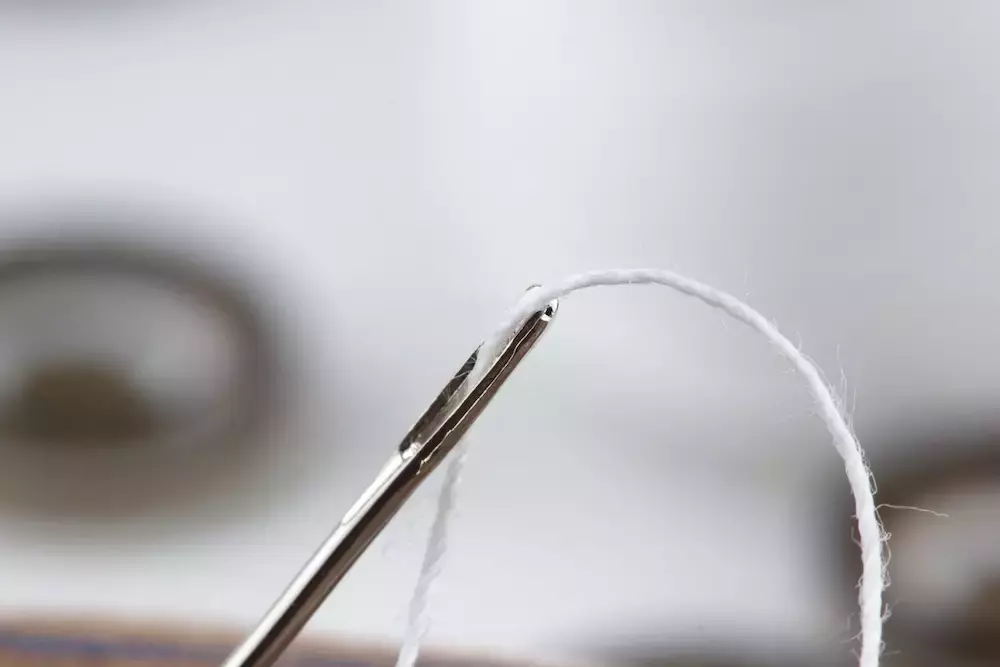Threading and Sewing Needle Tips & Tricks
2023-01-17
Sewing is a fun and rewarding hobby for millions of people. But as with any hobby, you may hit a few snags when you're first starting out. From threads that keep snapping to machines skipping stitches, many sewing pains are felt universally.
Whether you're a beginner or a seasoned seamstress, these threading and sewing tips and tricks will help you avoid some of the most common sewing mistakes.
Keep a Wide Variety of Needles on Hand
It's a good idea to keep a wide variety of sewing needles on hand so that you're ready and equipped for any project.
Although universal needles are an easy go-to for many beginners, they are not the best choice for every project. Specialized needles can be very useful when dealing with specific fabrics or threads. In addition to universal needles, stock up on these:
- Quilting needles
- Topstitch needles
- Ball point needles
- Metafil needles
- Stretch needles
- Microtex needles
- Jeans needles
- Leather needles
- Sharps needles
- Embroidery needles
Whether your next project calls for delicate lace, a chunky knitted blend, or intricate embroidered details, you can have the perfect needle for the job already in your sewing kit.
Match Your Thread Weight with the Right Needle Size
A common mistake is overlooking thread weight and ignoring needle size. In general, you'll need thicker thread and bigger needles for heavier fabrics.
When looking at needle sizes, the bigger the number, the thicker the needle is. However, the opposite is true for the thread. Thread weights typically range from 30 to 100, with 100 being the thinnest.
As a general rule of thumb, follow these needle and thread pairings:
- 100/16 Sewing Needles: Pair with 30-weight threads and thicker
- 90/14 Sewing Needles: Pair with 40-weight threads
- 80/12 Sewing Needles: Pair with 50-weight threads
- 70/10 Sewing Needles: Pair with 100-weight threads
- 60/8 Sewing Needles: Pair with delicate 100-weight silk and polyester threads
- Pairing the wrong size needle and thread weight can result in your thread fraying and shredding.
Know When to Replace Your Needle
Nobody loves replacing the needle on their sewing machine, but a dull or worn-out needle won't perform the way you want it to. It's important to replace your needle after about six to eight hours of sewing time. This ensures your needle is always in its best shape and will perform as expected.
Double-Check Your Stitch Settings
If your sewing machine has decorative stitches but they're just not quite showing up right, you may have your machine on the wrong settings. Many decorative stitches require specific width and length settings. Refer to your manual and make sure your machine is tuned to the right settings for the stitches you need.
Troubleshooting Skipped Stitches
No matter your skill level, you can run into skipped stitches. Skipped stitches are frustrating and sometimes perplexing. When they happen, check whether your stitch and thread tension settings are correct.
If they are — but your machine is still skipping stitches — you might have to get a little creative with your troubleshooting.
Your fabric could be too heavy for your needle. If that’s the case, using a needle one size larger should do the trick. Alternatively, you might try a different type of needle that is better suited for the job at hand.
How to Make Threading Sewing Needles Easier
For many people, threading the needle is the hardest part of any sewing project. However, this tedious job can be made easier. First, always use sharp scissors to cut your thread. This prevents fraying and flyaway strands while you're trying to thread the needle.
You can also use beeswax, saliva, or a drop of water to stiffen the thread and make it easier to manipulate and maneuver. Additionally, a drop of water on your thumb or index finger can act as a magnet to help pull the thread through the eye of the needle.
When in doubt, use a needle threader to easily feed the thread through the eye of the needle.
Turn to GoldStar Tool for All Your Sewing Needs
If you're looking for a reliable and affordable supplier for all of your sewing needs, look no further than GoldStar Tool. Whether you need a new sewing machine, sewing needles, replacement parts, grommets, or even project ideas, GoldStar Tool has it.





